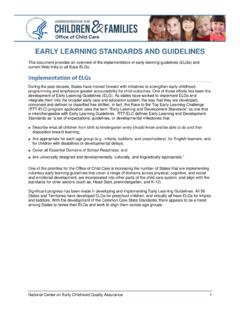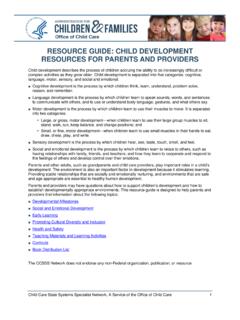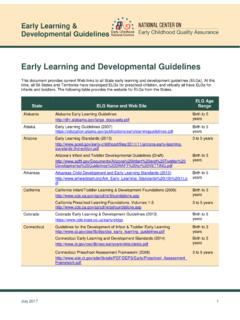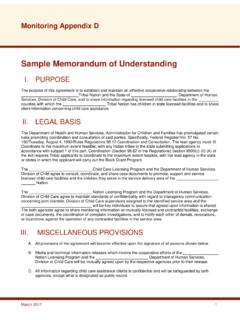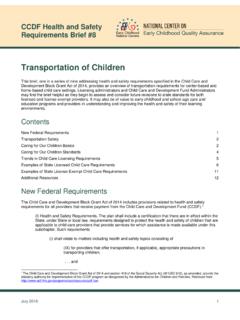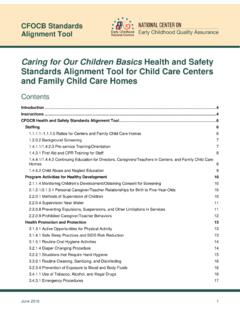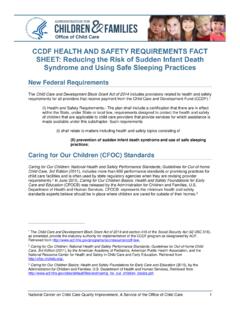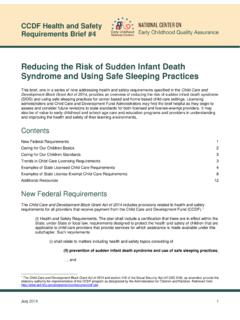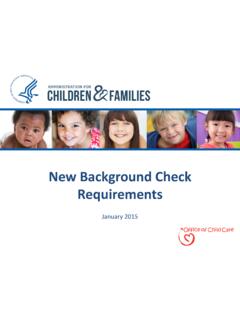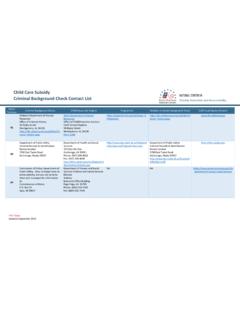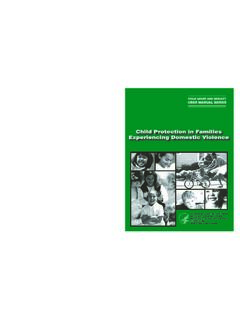Transcription of Building Partnerships Series
1 Family Engagement and Cultural Perspectives: Applying Strengths-based AttitudesFor Early Childhood ProfessionalsBuildingPartnershipsSeriesT his document was developed with funds from Grant #90HC0014 for Department of Health and Human Services, Administration for Children and families ,Office of Head Start, and Office of Child Care, by the National Center on Parent, Family, and Community resource may be duplicated for noncommercial uses without more information about this resource, please contact us: | 1-866-763-6481 Adapted from Building Partnerships : Guide to Developing Relationships with families 1 Family Engagement and Cultural Perspectives: Applying Strengths-based Attitudes Explore how understanding the cultural perspectives of families can positively impact relationship- Building and family engagement efforts.
2 Use this resource to review the following: yFamily Engagement and Relationship- Building yPerspective-taking yStrengths-based Attitudes yReflective Practice Opportunities yPractice Scenario: Aisha s Family yAdditional Resources and References This guide is intended for professionals in the early childhood field. Individuals, groups of staff, and supervisors can use this tool as part of training and reflective practice and Engagement and Cultural Perspectives: Applying Strengths-based Attitudes Parent and Family We use the words parent and family to honor all adult caregivers who make a difference in a child s life.
3 Parents refers to biological, adoptive, and step-parents as well as primary caregivers, such as grandparents, other adult family members, and foster parents. families can be biological or non-biological, chosen or circumstantial. They are connected through cultures, languages, traditions, shared experiences, emotional commitment, and mutual support. Family Engagement and Cultural Perspectives: Applying Strengths-based AttitudesPage 2 Family Engagement Family engagement is the process we use to build genuine relationships with families .
4 Positive relationships with families promote strong parent-child relationships, family well-being, and better outcomes for children and families . Understanding the cultural beliefs, values, and priorities of families is key to the family engagement process. The Influence of Cultures and Languages families come to an early childhood setting with distinct family cultures that give meaning and direction to their lives. A family s cultures are complex and influenced by many factors: family traditions, countries of origin, geographic regions, ethnic identities, cultural groups, community norms, sexual orientations, gender identities, educational and other experiences, personal choices, and home languages.
5 The cultural beliefs of individual family members and the entire family inform decisions made about the child and the family. Cultures shape our views on key issues such as family roles and goals, caregiving practices, learning, education, school readiness, child behaviors, and the nature of childhood itself. For many families in early childhood settings, their home languages play an important role in shaping the identities of their children. Cultural values and knowledge are passed down to children through languages, traditions, and the heart of early childhood education is a commitment to provide the best care and learning environment for all children.
6 Building relationships with families helps us create that environment. Understanding each other s cultural perspectives is an important part of Building these meaningful relationships. In Building relationships with families from linguistically diverse backgrounds, it is important to keep in mind that language helps children to understand their learning part of understanding a family s cultural perspectives is to learn about their beliefs, values, and priorities. We need to know what is important to families and try to understand how that impacts what they want for their also have to understand our own perspectives.
7 It is easier to see opportunities for connections with families when we know ourselves, understand our reactions, and take time to consider how the perspectives we bring from our lives influence our views of the families we work Building requires us to resist making assumptions and to set aside our judgments if we disagree or think things should be done a different way. Even when there are differences we can always return to the commitment we share with families : providing children with care that fosters their healthy growth and supports their learning.
8 Understanding the perspectives of families and seeing them as the experts helps create the best care and learning environment for their 3 Family Engagement and Cultural Perspectives: Applying Strengths-based Attitudes Reflective Practice Opportunity: Questions to ConsiderCare and LearningWhile every child, parent, and family are unique, many of our conversations with families involve common topics. We can anticipate that there will be discussions about learning and language, daily routines (such as sleeping, feeding, toileting), expectations, new skills, behavior, discipline, and relationships with peers and adults.
9 We also know that each family will bring unique perspectives to these discussions. Their hopes, choices, and goals are grounded in their family s cultures. Given the role of culture, it is important for us to ask ourselves regularly, Where do cultural perspectives the family s and ours fit into care and learning? Think about a family in your program. Choose a topic from the table on the next page and then follow the reflection outlined the family s perspectives on the topic and reflect on the following questions: yWhat do you know is important to the family now?
10 YWhat are the family s expectations for the child? yWhat are the family s expectations for the program? Now, consider your perspectives on the same topic and reflect on the following questions: yWhat is most important to you about that topic? yWhat are your expectations for the child and family? yWhat personal and professional experiences have shaped your perspectives on the topic? yWhat values and beliefs do you think inform your perspectives?Reflect on both perspectives: yHow are your perspectives the same as the family s perspectives?
